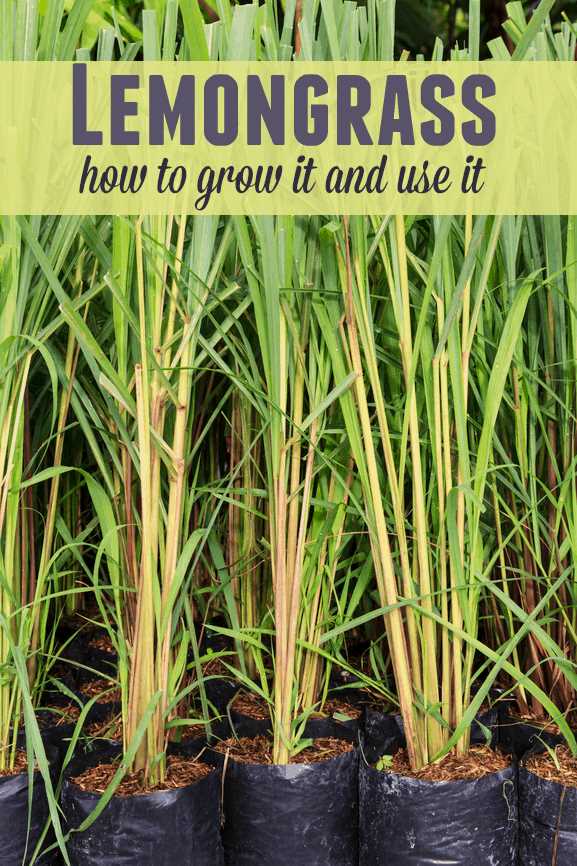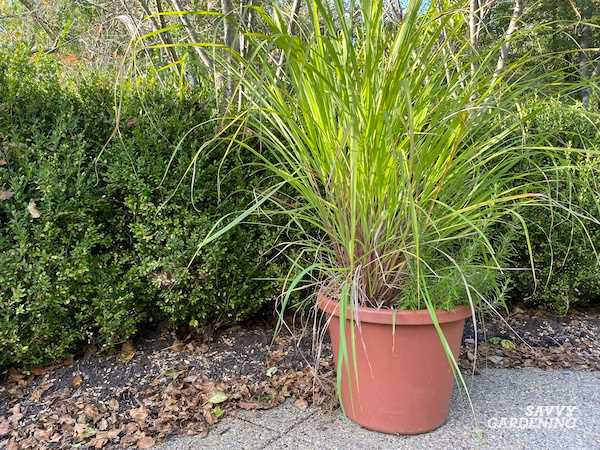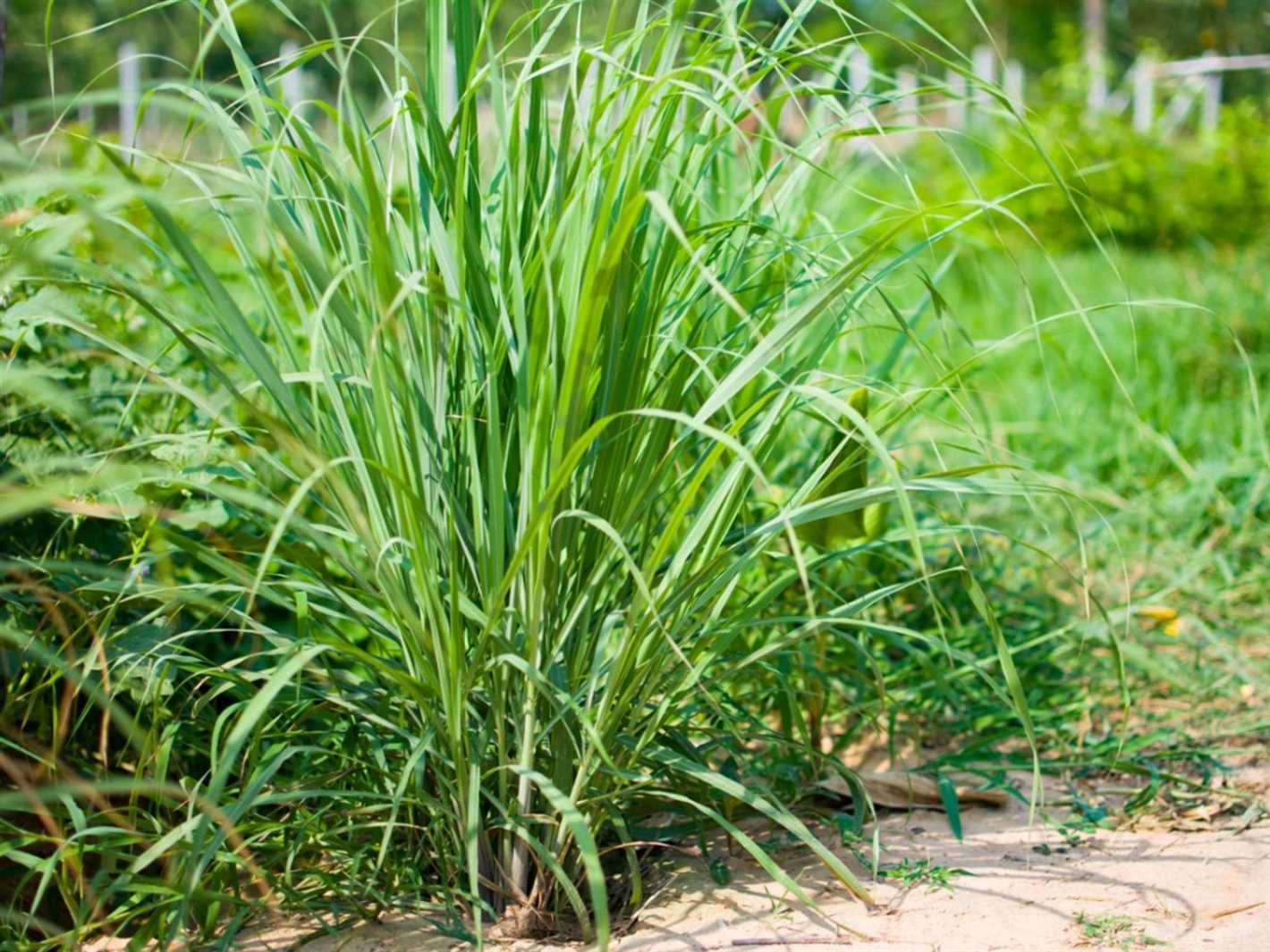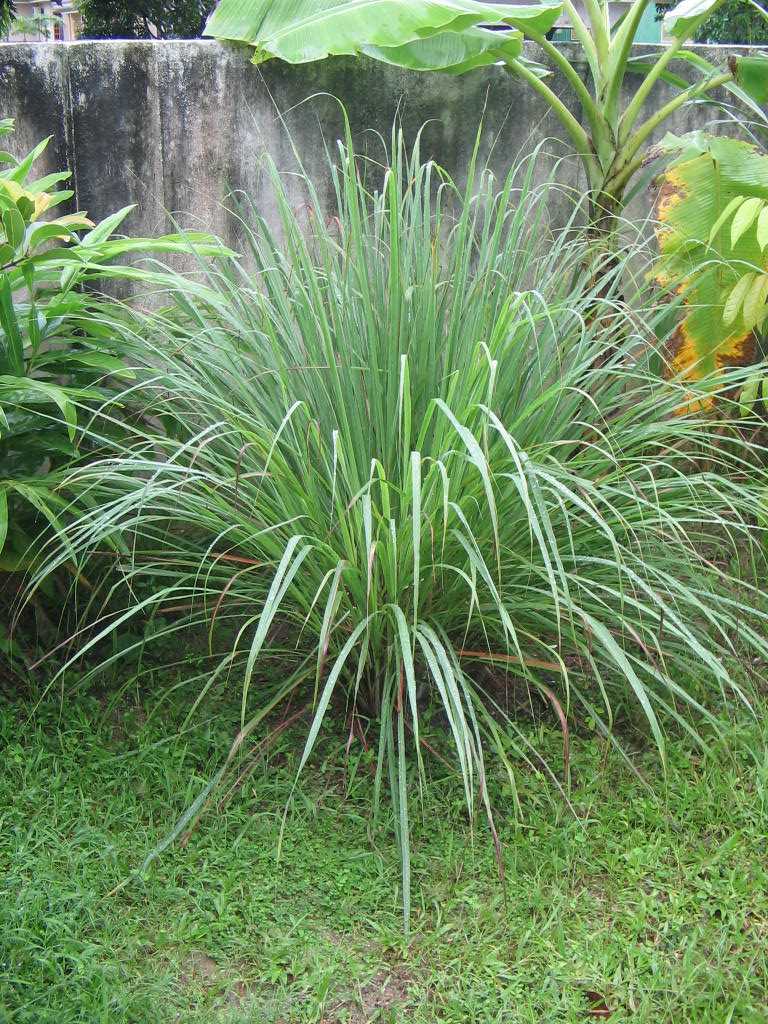- Varieties of Chinese Lemongrass
- 1. East Indian Lemongrass
- 2. West Indian Lemongrass
- 3. Thai Lemongrass
- 4. Sweet Lemongrass
- 5. Red Lemongrass
- Green Lemongrass
- Thai Lemongrass
- Tips for Growing Chinese Lemongrass
- Selecting the right location
- Preparing the Soil
- 1. Choose a well-draining location
- 2. Clear the area
- 3. Loosen the soil
- 4. Amend the soil
- 5. Test the soil pH
- 6. Level the soil
- 7. Add mulch
- 8. Water the soil
- Planting the lemongrass
- 1. Choose the right location
- 2. Prepare the soil
- 3. Divide the plant
- 4. Plant the divisions
- 5. Water and mulch
- 6. Care and maintenance
- Providing proper care
- Harvesting the lemongrass
- Common pests and diseases
- Pests
- Diseases
- Question-answer:
- What is Chinese lemongrass?
- What are the different varieties of Chinese lemongrass?
- How do I grow Chinese lemongrass?
- Can I grow Chinese lemongrass indoors?
- How do I harvest Chinese lemongrass?
- What are the culinary uses of Chinese lemongrass?
- Are there any tips for growing Chinese lemongrass?
- Video: How to Grow and Harvest Lemongrass
Chinese Lemongrass, also known as Cymbopogon citratus, is a popular culinary herb with a strong lemon flavor. It is widely used in Asian cuisine and is a key ingredient in dishes such as soups, stir-fries, and teas. Growing your own Chinese Lemongrass at home can be a rewarding experience, and it’s easier than you might think. In this guide, we will explore different varieties of Chinese Lemongrass and provide some tips on how to successfully grow it in your own garden.
There are several varieties of Chinese Lemongrass, each with its own unique characteristics. The two most common varieties are ‘Xiang Mao’ and ‘Thai’. ‘Xiang Mao’ is a tall variety that can reach up to 3 feet in height, while ‘Thai’ is a more compact variety that grows to about 2 feet. Both varieties have similar lemony flavors and can be used in cooking, but ‘Xiang Mao’ is often preferred for its stronger aroma.
Chinese Lemongrass is a tropical plant that thrives in warm climates. It requires full sun and well-drained soil to grow successfully. If you live in a region with cold winters, you can still grow Chinese Lemongrass by planting it in containers and bringing it indoors during the colder months. To plant Chinese Lemongrass, start by purchasing young plants or stalks from a reputable nursery. Dig a hole in your garden or a large container and place the stalks about 2-3 inches deep, making sure to space them at least 12-18 inches apart.
Chinese Lemongrass is a relatively low-maintenance plant. Water it regularly, especially during dry spells, and be sure to provide it with enough space to grow. You can also fertilize it with a slow-release organic fertilizer to promote healthy growth. In terms of pests and diseases, Chinese Lemongrass is generally hardy and resistant. However, you may need to keep an eye out for common garden pests such as aphids and snails. If you notice any signs of damage or infestation, simply remove the affected leaves or use organic pest control methods to keep them at bay.
Overall, growing Chinese Lemongrass is a rewarding and enjoyable experience. With the right conditions and care, you can have a bountiful supply of this flavorful herb right in your own backyard. Whether you plan to use it in your cooking or simply enjoy its fresh scent in the garden, Chinese Lemongrass is a versatile and valuable addition to any herb collection. So why not give it a try and enjoy the many benefits of growing your own Chinese Lemongrass?
Varieties of Chinese Lemongrass
Chinese lemongrass, also known as Cymbopogon citratus, is a popular herb used in Chinese cuisine for its unique citrus-like flavor. There are several varieties of Chinese lemongrass, each with its own characteristics and growing requirements. Here are some of the most commonly grown varieties:
1. East Indian Lemongrass
East Indian lemongrass, scientifically known as Cymbopogon flexuosus, is a perennial grass that grows up to 3 feet tall. It has long, narrow leaves with a strong lemon scent and flavor. This variety is commonly used in teas, soups, and curries.
2. West Indian Lemongrass
West Indian lemongrass, also known as Cymbopogon citratus, is another popular variety of Chinese lemongrass. It has thicker stems and broader leaves compared to East Indian lemongrass. This variety is commonly used in Asian dishes, such as stir-fries and marinades.
3. Thai Lemongrass
Thai lemongrass, scientifically known as Cymbopogon citratus, is another variety commonly grown in China. It has a milder flavor compared to the West Indian lemongrass, with a hint of ginger. Thai lemongrass is often used in Thai and Vietnamese cuisine.
4. Sweet Lemongrass
Sweet lemongrass, scientifically known as Cymbopogon nardus, is a variety of Chinese lemongrass that has a sweeter and milder flavor compared to other varieties. It is often used in desserts, drinks, and perfumes.
5. Red Lemongrass

Red lemongrass, also known as Cymbopogon ramosus, is a unique variety of Chinese lemongrass that has reddish-purple stems. It has a similar flavor to West Indian lemongrass but with a slightly sweeter taste. Red lemongrass is commonly used in traditional Chinese herbal remedies.
These are just a few of the many varieties of Chinese lemongrass available. Each variety has its own distinct flavor and aroma, so it’s worth experimenting with different varieties to find your favorite. Whether you’re looking to add a citrusy twist to your dishes or want to enjoy the aromatic benefits of Chinese lemongrass, there’s a variety out there that will suit your tastes and growing conditions.
Green Lemongrass
The green lemongrass is a popular variety of Chinese lemongrass known for its vibrant green color and strong aromatic properties. It is widely used in Asian cuisines for its unique flavor and fragrance.
This variety of lemongrass is characterized by its long, slender stalks, which can reach a height of up to 3 feet. The leaves are pointed and have a vibrant green color, giving the plant a fresh and appealing appearance.
Green lemongrass is easy to grow and can thrive in both outdoor gardens and indoor pots. It prefers a warm and sunny environment with well-drained soil. Regular watering and occasional fertilization can help promote healthy growth and enhance the flavor of the stalks.
To propagate green lemongrass, you can either plant the stalks directly in the soil or start them from seeds. If you choose to plant the stalks, make sure to trim the leaves and place the base of the stalk in water for a few days to promote root growth before planting in the soil.
Once the lemongrass is established, it requires minimal care. Regular harvesting can be done by cutting the stalks close to the ground. The stalks can be used fresh or dried for later use in cooking or making herbal teas.
Aside from its culinary uses, green lemongrass is also known for its various health benefits. It contains essential oils that possess anti-inflammatory and antibacterial properties. These oils are commonly used in aromatherapy and natural remedies for promoting relaxation and soothing various ailments.
Overall, green lemongrass is a versatile and aromatic herb that can be a valuable addition to any garden or kitchen. Its vibrant green color, strong fragrance, and unique flavor make it a popular choice for enhancing the taste of soups, stir-fries, and teas.
- Key Features:
- Elegant green color
- Strong aromatic properties
- Long, slender stalks
- Easy to grow
- Can be propagated from stalks or seeds
- Minimal care required
Whether you are a gardening enthusiast or a culinary explorer, green lemongrass is definitely worth considering. Its vibrant appearance and unique flavor can add a refreshing twist to your dishes and provide a delightful sensory experience.
Thai Lemongrass
Thai Lemongrass, also known as Cymbopogon citratus, is a popular variety of lemongrass that is commonly used in Thai cuisine. It is known for its strong citrus flavor and aroma, which adds a unique and refreshing taste to dishes.
Here are some key features of Thai Lemongrass:
- Growth Habit: Thai Lemongrass grows in clumps with long, slender stalks and tufted leaf blades.
- Height: It can reach a height of 2 to 4 feet.
- Color: The stalks of Thai Lemongrass have a pale yellow to greenish color.
- Aroma: Thai Lemongrass has a strong citrusy scent, similar to lemon.
- Flavor: The flavor of Thai Lemongrass is more intense and sweeter compared to other varieties. It has a zesty, lemon-like taste.
Thai Lemongrass is not only used for its culinary purposes but also for its medicinal properties. It is believed to have various health benefits, such as improving digestion, reducing inflammation, and relieving anxiety.
When growing Thai Lemongrass, it is important to provide it with well-drained soil and full sunlight. It can tolerate a wide range of soil types but prefers a slightly acidic soil. Regular watering is necessary to keep the soil evenly moist, especially during hot and dry periods.
| Light | Soil | Watering | Temperature |
|---|---|---|---|
| Full sunlight | Well-drained soil | Regular watering to keep the soil evenly moist | Thrives in warm climates |
To propagate Thai Lemongrass, you can either grow it from seeds or root division. Root division is the most common method and can be done by separating the clumps of the plant and replanting them in separate pots or in the ground.
Thai Lemongrass can be harvested by cutting the stalks close to the base of the plant. The outer sheaths of the stalks are tough and should be removed before using the inner part, which is tender and flavorful.
Whether you are using Thai Lemongrass in your cooking or enjoying its aromatic scent in your garden, it is a versatile and delightful herb to grow. With proper care and growing conditions, you can enjoy its fresh and vibrant flavors year-round.
Tips for Growing Chinese Lemongrass
- Sunlight: Chinese lemongrass requires full sun to thrive, so choose a location in your garden that receives at least six hours of direct sunlight per day.
- Soil: Make sure your soil is well-drained and rich in organic matter. Chinese lemongrass prefers slightly acidic soil with a pH between 6.0 and 7.0.
- Watering: Water your Chinese lemongrass regularly, keeping the soil evenly moist. However, make sure not to overwater as the plant can rot if the roots are constantly sitting in water.
- Fertilizer: Chinese lemongrass benefits from regular fertilization. Apply a balanced, slow-release fertilizer in early spring, and repeat every four to six weeks during the growing season.
- Propagation: Chinese lemongrass can be propagated from stem cuttings. Take a healthy stem cutting and place it in a container with well-draining soil. Keep the soil moist until the cutting establishes roots.
- Pruning: Prune your Chinese lemongrass regularly to promote healthy growth and control its size. Remove any dead or damaged leaves, as well as any flower stalks that may develop.
- Pests and Diseases: Chinese lemongrass is generally resistant to pests and diseases. However, keep an eye out for common garden pests such as aphids, mealybugs, and grasshoppers. If necessary, treat the infestation with an appropriate insecticide.
- Harvesting: Harvest Chinese lemongrass by cutting the stalks close to the base of the plant. The fresh stalks can be used in cooking, while the dried leaves and stems can be used to make herbal tea.
Following these tips should help you successfully grow Chinese lemongrass in your garden. Enjoy its fresh citrusy aroma and use it to add a unique flavor to your culinary creations!
Selecting the right location
When it comes to growing Chinese lemongrass, selecting the right location is crucial for the success of your plants. Here are some factors to consider when choosing a location:
- Sunlight: Chinese lemongrass thrives in full sun. Choose a location that receives at least 6-8 hours of direct sunlight per day.
- Temperature: Chinese lemongrass prefers warm and tropical climates. It is sensitive to frost, so make sure to choose a location where the temperature does not drop below 50°F (10°C).
- Soil: Chinese lemongrass grows best in well-draining soil with a pH level between 6.0 and 7.5. Avoid clay or compacted soil, as it can lead to waterlogged roots.
- Water: Chinese lemongrass requires regular watering to keep the soil moist but not soggy. Choose a location where you have easy access to a water source.
- Space: Chinese lemongrass can spread and grow quite tall, so make sure to select a location with enough space for the plants to grow without crowding or shading each other.
By taking these factors into consideration when selecting the right location for your Chinese lemongrass, you can create an ideal growing environment and ensure the healthy growth of your plants.
Preparing the Soil
Before planting Chinese lemongrass, it is important to prepare the soil properly. This will help ensure that the plants have the necessary nutrients and conditions for healthy growth.
1. Choose a well-draining location

Chinese lemongrass prefers well-draining soil to avoid waterlogged roots, which can cause rot. Select a location in your garden that has good drainage.
2. Clear the area
Remove any weeds, rocks, or debris from the planting area. This will prevent competition for nutrients and create a clean space for the lemongrass to grow.
3. Loosen the soil
Use a garden fork or tiller to loosen the soil to a depth of about 8-10 inches. This will help improve drainage and provide room for the plants’ roots to spread out.
4. Amend the soil
If your soil is lacking in nutrients, you can amend it with organic matter such as compost or well-rotted manure. Mix in a generous amount of organic matter into the soil to improve its fertility.
5. Test the soil pH
Chinese lemongrass prefers a slightly acidic to neutral soil pH range of 6.0 to 7.0. Use a soil testing kit to check the pH of your soil and adjust it accordingly if necessary.
6. Level the soil

Rake the soil surface so that it is level and smooth. This will make it easier to plant the lemongrass and ensure that it receives consistent water distribution.
7. Add mulch
Apply a layer of organic mulch, such as straw or wood chips, around the base of the lemongrass plants. This will help conserve moisture, suppress weeds, and regulate soil temperature.
8. Water the soil
Before planting the lemongrass, thoroughly water the soil to ensure it is uniformly moist. This will help the transplants establish roots and reduce transplant shock.
By following these soil preparation steps, you can create a suitable environment for growing Chinese lemongrass. With proper care and maintenance, your lemongrass plants will thrive and provide you with fresh, aromatic flavors.
Planting the lemongrass
When it comes to planting lemongrass, it’s important to consider the variety you have chosen. Chinese lemongrass is typically propagated through division, while other varieties can also be grown from seeds or transplants.
Here’s a step-by-step guide to planting Chinese lemongrass:
1. Choose the right location
Lemongrass thrives in full sunlight, so choose a sunny spot in your garden or yard. It also prefers well-draining soil, so make sure the soil is loose and fertile.
2. Prepare the soil

Before planting, loosen the soil using a garden fork or tiller. Remove any weeds or stones that may hinder the growth of the lemongrass.
3. Divide the plant
If you have a mature Chinese lemongrass plant, you can divide it to create new plants. Carefully dig up the plant and separate the clumps into smaller sections, making sure each section has a good amount of roots.
4. Plant the divisions
Dig holes that are about twice the depth and width of the divisions. Place each division in a hole, making sure the roots are well covered with soil. Space the divisions at least 2-3 feet apart to allow room for growth.
5. Water and mulch
After planting, water the divisions thoroughly to help with establishment. Apply a layer of organic mulch around the plants to help retain moisture and suppress weed growth.
6. Care and maintenance
Keep the lemongrass plants well-watered, especially during dry periods. Fertilize the plants with a balanced fertilizer every 4-6 weeks during the growing season. Remove any dead or damaged leaves regularly to promote healthy growth.
By following these planting tips, you’ll be well on your way to growing healthy Chinese lemongrass in your garden.
Providing proper care
- Light: Chinese lemongrass requires full sun to partial shade for optimal growth. Make sure to place the plant in a location where it can receive at least 6-8 hours of direct sunlight every day.
- Water: Keep the soil consistently moist, but not soggy. Water the plant regularly, providing enough water to thoroughly saturate the soil. Avoid overwatering as it can cause root rot.
- Fertilizer: Chinese lemongrass benefits from regular fertilization. Apply a balanced, slow-release fertilizer once every month during the growing season. Follow the manufacturer’s instructions for application rates.
- Temperature and humidity: Chinese lemongrass prefers warm temperatures between 60-85°F (15-29°C). It can also tolerate moderate humidity levels. Avoid exposing the plant to frost as it can damage or kill the foliage.
- Pruning: Regular pruning helps to maintain the shape and size of the plant. Trim any dead or damaged leaves and remove any overgrown or leggy stems. Pruning also stimulates new growth.
- Pest control: Chinese lemongrass is generally resistant to pests and diseases. However, occasionally, it can be affected by aphids or spider mites. Inspect the plant regularly for any signs of infestation and treat with appropriate insecticides if necessary.
- Propagation: Chinese lemongrass can be propagated by dividing the clumps. Carefully separate the root ball into individual plants, making sure each division has healthy root and shoot sections. Transplant the divisions into separate pots or directly into the garden.
By following these care tips and providing the necessary conditions, you can ensure the healthy growth of your Chinese lemongrass plants.
Harvesting the lemongrass
Once your Chinese lemongrass plants have reached the desired height, you can begin harvesting. Harvesting the lemongrass is relatively easy and can be done using a pair of sharp gardening shears or a knife.
Here are some tips to help you harvest your lemongrass:
- Choose the right time: Lemongrass is best harvested when it is about 12-18 inches tall. At this stage, the leaves will have a strong aroma and the stalks will be thick and tender.
- Locate the stalks: Carefully push aside the outer leaves to expose the base of the stalks. The stalks should be light green in color and feel firm to the touch.
- Cut or trim: Use a sharp pair of shears or a knife to cut the stalks just above the base. Alternatively, you can trim the stalks about an inch above the ground, leaving the base intact. This will allow the plant to regrow for future harvests.
- Remove the outer leaves: Once the stalks are harvested, you can remove the outer leaves by peeling them away. The inner leaves can be used for cooking or as a tea.
- Store or use immediately: Lemongrass can be used fresh or stored for later use. To store, trim the stalks to the desired length and wrap them in a damp paper towel. Place the wrapped stalks in a plastic bag and store in the refrigerator for up to two weeks.
Remember to harvest your lemongrass regularly to encourage new growth and ensure a continuous supply of fresh stalks.
Common pests and diseases
Chinese lemongrass is generally a sturdy and resilient plant, but it can still be susceptible to certain pests and diseases. Here are some common ones to watch out for:
Pests
- Mealybugs: These small, white insects feed on the sap of the plant and can cause wilting and yellowing of the leaves. They can be controlled by spraying the plant with insecticidal soap or a mixture of water and dish soap.
- Aphids: Aphids are small, soft-bodied insects that suck the sap from the plant, causing stunted growth and distorted leaves. They can be controlled by spraying the plant with a solution of water and neem oil or by introducing natural predators like ladybugs.
- Spider mites: These tiny pests can cause yellowing and bronzing of the leaves. They can be controlled by regularly spraying the plant with water to increase humidity and by applying insecticidal soap.
Diseases
- Fungal diseases: Chinese lemongrass can be susceptible to fungal diseases like powdery mildew and leaf spot. These diseases can be prevented by providing proper air circulation, avoiding overwatering, and applying a fungicide if necessary.
- Root rot: Overwatering can lead to root rot, which is a fungal disease that affects the roots of the plant. To prevent root rot, make sure the soil has good drainage and avoid overwatering.
- Mosaic virus: Mosaic virus can cause mottling and distortion of the leaves. Unfortunately, there is no cure for mosaic virus, so infected plants should be removed and destroyed to prevent the spread of the virus.
Regularly inspecting your Chinese lemongrass plants and taking prompt action at the first sign of pests or diseases can help ensure the health and productivity of your plants.
Question-answer:
What is Chinese lemongrass?
Chinese lemongrass, also known as Chinese fevervine or Cymbopogon citratus, is a perennial grass native to Southeast Asia. It is widely used in Chinese cuisine for its unique lemon-like flavor and aroma.
What are the different varieties of Chinese lemongrass?
There are several varieties of Chinese lemongrass, including East Indian lemongrass (Cymbopogon flexuosus), West Indian lemongrass (Cymbopogon citratus), and Javanese lemongrass (Cymbopogon winterianus). Each variety has its own distinct characteristics and uses.
How do I grow Chinese lemongrass?
Growing Chinese lemongrass is relatively easy. It thrives in well-drained soil and requires plenty of sunlight. You can start by planting lemongrass cuttings or dividing an existing plant. Regular watering and occasional feeding with a balanced fertilizer will help it grow healthy and strong.
Can I grow Chinese lemongrass indoors?
Yes, you can grow Chinese lemongrass indoors as long as you provide it with enough sunlight and warmth. Place the plant near a sunny window or use artificial grow lights to ensure it receives at least 6 hours of direct light per day. Keep the indoor temperature between 70-85°F (21-29°C) for optimal growth.
How do I harvest Chinese lemongrass?
To harvest Chinese lemongrass, simply cut the stalks close to the base using a sharp knife or scissors. Harvesting is best done in the morning when the plant’s essential oils are at their highest concentration. Trim off any damaged or yellowed leaves before using the stalks in cooking or for making herbal teas.
What are the culinary uses of Chinese lemongrass?
Chinese lemongrass is a popular ingredient in many Asian cuisines. It is often used to add a refreshing citrusy flavor to soups, curries, stir-fries, and marinades. It can also be brewed as a tea or infused into oils for a fragrant twist in a variety of dishes.
Are there any tips for growing Chinese lemongrass?
Yes, here are a few tips for growing Chinese lemongrass: 1) Grow it in well-drained soil and provide ample sunlight. 2) Water it regularly, but avoid overwatering to prevent root rot. 3) Fertilize with a balanced fertilizer every month during the growing season. 4) Protect it from extreme cold temperatures, as Chinese lemongrass is sensitive to frost.







